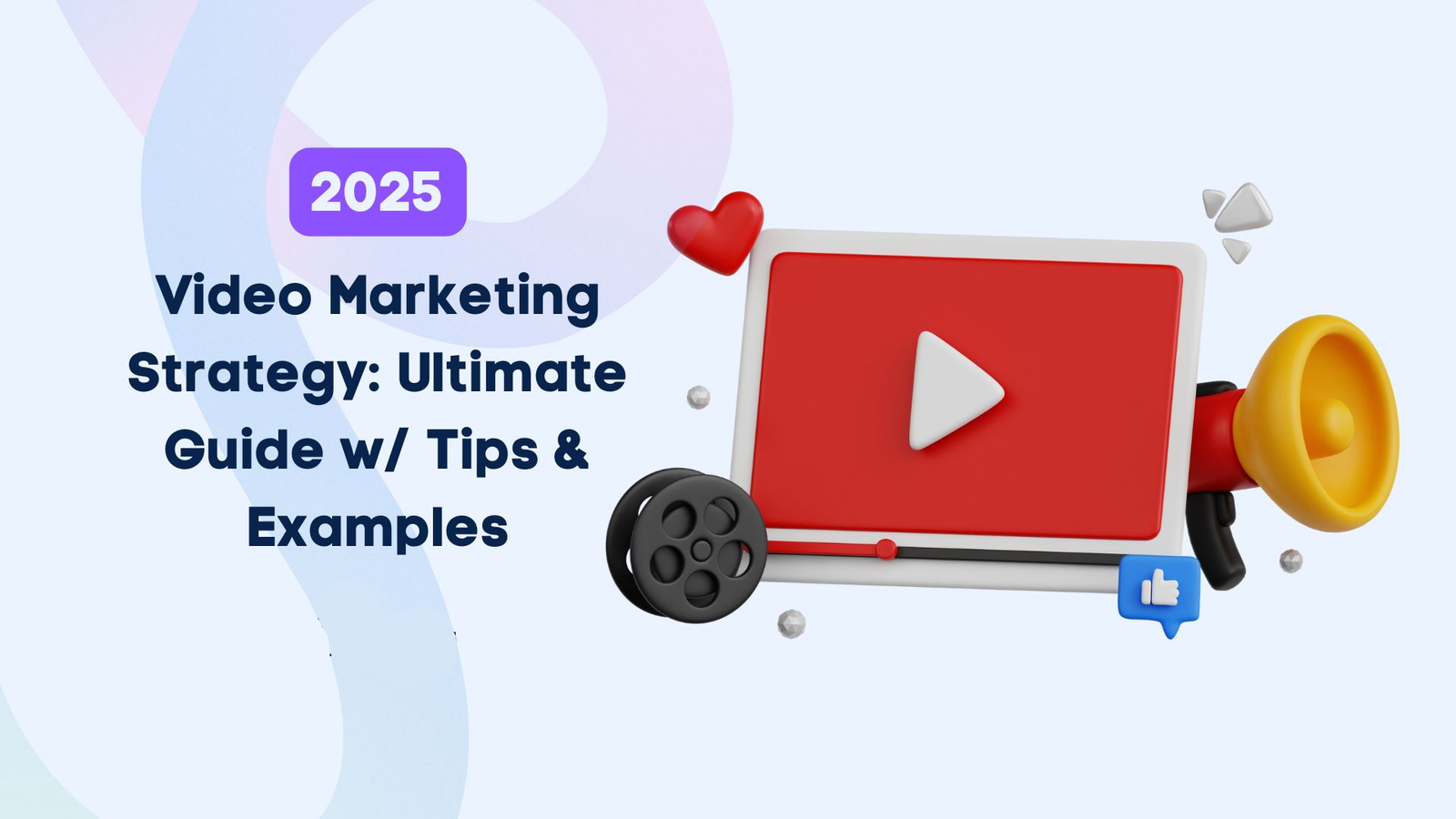Video Marketing Strategy 2025, In today’s fast-paced digital landscape, video marketing has cemented itself as one of the most powerful tools in a brand’s arsenal. With the average internet user consuming more than 17 hours of online video content per week, businesses can no longer afford to overlook the influence of a strong video marketing strategy. As we head into 2025, the competition has grown fiercer, and standing out requires more than just flashy visuals and catchy music—it demands strategy, precision, and intent.
Whether you’re a small business, content creator, or large enterprise, crafting a high-converting video marketing strategy in 2025 is essential to capturing attention and driving results. This article outlines proven steps, current trends, and essential tactics to help you create videos that convert viewers into loyal customers.
Understanding the Power of Video Marketing in 2025
Before diving into tactics, it’s essential to understand why video marketing continues to be a top priority. According to a 2024 report by Wyzowl, 91% of businesses use video as a marketing tool, and 87% report that video gives them a positive ROI. The shift in consumer behavior, coupled with advancements in mobile streaming, artificial intelligence, and personalization, means that brands that fail to prioritize video will be left behind.
Primary keyword: video marketing strategy
A high-converting video marketing strategy isn’t just about uploading content on YouTube or Instagram Reels. It’s about understanding your audience, creating value-packed content, optimizing for performance, and tracking metrics that matter.
Define Clear Goals and KPIs
Every successful campaign starts with a plan. Ask yourself: what do you want your video content to achieve?
- Brand awareness?
- Lead generation?
- Product promotion?
- Customer education?
Define your key performance indicators (KPIs) based on these goals. For instance, if your objective is lead generation, focus on click-through rates and conversions rather than just views.
Quick Tip:
Set SMART goals (Specific, Measurable, Achievable, Relevant, and Time-bound) to keep your strategy aligned and results-focused.
Know Your Audience Inside Out
Video Marketing Strategy 2025, You can’t create content that converts without knowing who you’re speaking to. In 2025, understanding your audience requires more than demographic data. Dive into:
- Behavioral patterns
- Content consumption habits
- Platform preferences
- Pain points and motivations
Use analytics tools like Google Analytics, Meta Insights, and CRM data to create detailed buyer personas. Personalization is no longer optional—it’s the key to engagement.
Choose the Right Platforms
Not all platforms serve the same purpose. A successful video marketing strategy requires you to meet your audience where they are. Here’s a breakdown of where certain types of content perform best in 2025:
- YouTube: Ideal for long-form educational or storytelling content.
- Instagram Reels & TikTok: Short, snackable videos with viral potential.
- LinkedIn: B2B content, testimonials, and industry insights.
- Facebook: Brand storytelling and ads targeting older demographics.
- X (formerly Twitter): Real-time updates, short-form content, and threads with embedded videos.
Adapting your content to platform-specific formats and algorithms increases your chance of visibility and engagement.
Prioritize Storytelling and Emotional Connection
In 2025, the content that converts is the content that connects. Viewers are inundated with ads—what cuts through the noise is authentic storytelling.
Build narratives that:
- Show real human experiences
- Highlight challenges and resolutions
- Evoke emotion (humor, empathy, inspiration)
- Feature relatable characters (not just influencers)
For example, customer testimonial videos or behind-the-scenes looks at your brand can create a sense of trust and relatability that static ads simply can’t match.
Optimize for Mobile and Short Attention Spans
Over 80% of video content is consumed on mobile devices, and the average attention span has shrunk dramatically. To keep viewers engaged:
- Keep intros under 5 seconds
- Use dynamic visuals and motion graphics
- Include subtitles (many watch without sound)
- Maintain vertical format for mobile-first platforms
Short-form videos under 60 seconds are thriving, especially for top-of-funnel content. However, don’t discard long-form content—it works well for deep dives and educational videos.
Include Strong CTAs and Interactive Elements
A video that doesn’t guide the viewer toward an action is a missed opportunity. Every piece of content should have a clear call-to-action (CTA). Whether it’s “Subscribe,” “Learn More,” “Buy Now,” or “Book a Demo,” make your CTA visible, compelling, and relevant to the content.
Additionally, leverage interactive video features available on platforms like YouTube and Instagram:
- Clickable end screens
- Polls and questions
- Live chat and Q&A sessions
- Shoppable links within videos
These features drive deeper engagement and can significantly increase conversion rates.
Leverage AI and Data Analytics (The Smart Way)
Video Marketing Strategy 2025, While AI has become a buzzword, in 2025, it’s a strategic necessity. Use AI-powered tools to:
- Personalize video content for different audience segments
- Analyze viewer behavior and optimize accordingly
- Automate video editing, captioning, and distribution
- Predict performance trends with advanced analytics
Tools like Vidyard, Wistia, and Pictory can offer deep insights into viewer drop-off points, engagement rates, and A/B test results, helping you refine your approach in real time.

Invest in High-Quality Production—But Don’t Overthink It
Quality matters, but perfection is not always necessary. In fact, authentic, “raw” videos often outperform over-produced ones. That said, ensure your video has:
- Clear audio
- Proper lighting
- Steady camera work
- Consistent branding
In 2025, audiences expect a certain level of professionalism—even in casual formats. But don’t let production overwhelm your message. Content is still king.
Repurpose and Distribute Strategically
Creating content is half the battle—getting it seen is the other. Maximize your ROI by repurposing your videos:
- Turn a long YouTube video into Instagram clips
- Extract audio for a podcast episode
- Convert snippets into GIFs or memes
- Transcribe into blog posts or newsletters
Distribute content across multiple channels, tailoring the format to each platform. Use SEO-optimized titles, tags, and descriptions to increase visibility. Embedding videos in your website can also improve dwell time and SEO rankings.
Measure, Analyze, and Improve
Lastly, review your video’s performance consistently. Use data to answer:
- Which videos are driving the most conversions?
- Where are users dropping off?
- Are viewers taking the desired actions?
Make data-driven adjustments to your strategy. Remember, video marketing is not a one-time campaign—it’s a continuous cycle of testing and learning.
Read More: How to Use Social Media Videos to Increase Engagement and Sales
Conclusion
Video Marketing Strategy 2025, As we step further into the digital age, video remains an indispensable asset for marketers. But in 2025, success hinges on more than just posting content. It requires a data-backed, emotionally resonant, platform-specific video marketing strategy that balances creativity with measurable goals.
By understanding your audience, leveraging new tools, optimizing for mobile, and delivering genuine value through storytelling, your videos can do more than just go viral—they can convert.





